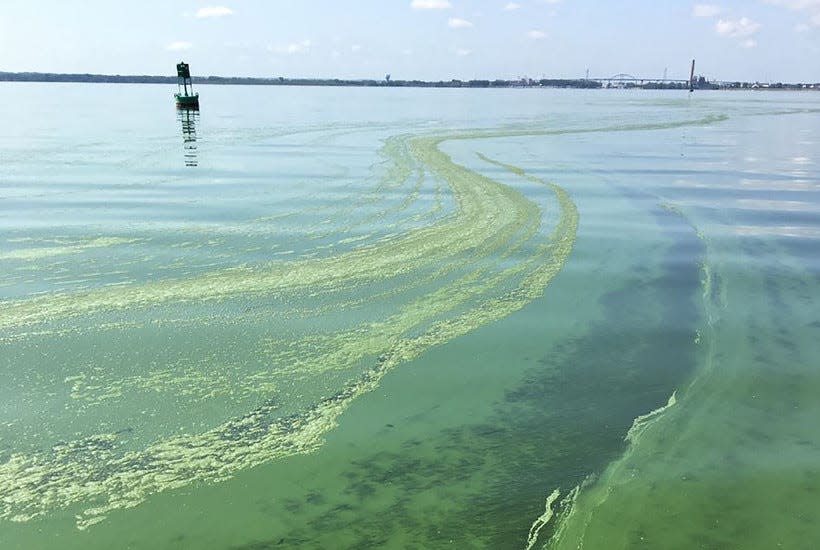How to protect against the harmful effects of algal blooms in Bucks County lakes, rivers
When harmful levels of algae were found in Lake Galena and Lake Towhee in Bucks County last month, officials urged caution and to avoid the waters.
Harmful algal blooms occur when algae grow out of control and have harmful effects on people and nature, and it's important to check a lake's status before jumping in if a bloom is suspected or you see a discoloration. They can be dangerous to humans, wildlife and the environment.
Here's some tips and advice for making sure you stay safe as harmful levels of algae could make:

How is algae in Bucks County lakes and rivers monitored?
In Bucks County, algal levels are measured by the Pennsylvania Harmful Algal Bloom Task Force. Stephanie Berardi, the southeast regional communication manager for the state Department of Environmental Protection, said it is tested on a routine basis.
“PA DEP samples several lakes throughout the state on a monthly basis. DCNR also tests several lakes in state parks on a routine basis at least monthly,” Berardi said. “Samples can also be taken in response to an observed algal bloom as well.”
According to the DEP, samples are collected when algal blooms are most expected, or if algae is seen.
“PA DEP samples certain waterbodies routinely from June through October when algal blooms are expected to happen due to warmer temperatures. Samples can be taken year-round however in response to an observed algal bloom,” Berardi said.
More: What does a harmful algal bloom in Bucks County lakes mean for you?
What level of algal would signify an algal bloom?
When the DEP samples for algae, it is looking for levels of cyanobacteria. Cyanobacteria is a type of algae that is typically blue or green and undergoes photosynthesis.
The key to this is the level of its density. If the density reaches 300 units per milliliter, the DEP puts out an advisory on the use of the lake and will notify Bucks County’s Parks and Recreation.
In an advisory, as was issued for Lake Galena in Peace Valley Park in Central Bucks and Lake Towhee in Upper Bucks County, the lakes and rivers are still permitted for use under your own personal judgement. The DEP suggests to look for signs of discoloration in the water, typically areas that will appear more blue or green than usual. This is often seen near boat docks.
If the density reaches 1,500 units per milliliter or above, you should avoid boating, fishing, and touching the water entirely, according to the DEP.
Signs should be posted letting you know if an algal bloom is in effect, but also ask park employees to see if they’ve received any news. Also, check the social media pages of Bucks County Recreation for these warnings, as they may be posted.
More: Telford man dies a hero after jumping into Lake Nockamixon to save 2 children.
What to do if you come into contact with algae?
Coming into contact with algae can produce symptoms including “diarrhea or vomiting, difficulty breathing, dizziness, and weakness or lethargy,” as said by the Pennsylvania Harmful Algal Bloom Task Force.
To combat this, you should wash with soap and water as soon as possible. If you have any of the symptoms, it’s best to see your primary care doctor as soon as possible.
More: Here's what you'll find if you visit all 8 'Art in the Parks' Lower Makefield sculptures
This article originally appeared on Bucks County Courier Times: Algae blooms suspected in Bucks County's Lake Galena and Lake Towhee

